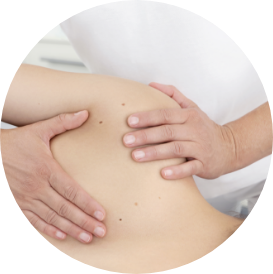What is osteopathy?
Osteopathy is a holistic medicine that understands the human being in a multi-layered structural, functional and biochemical context. Its aim is to recognize functional disorders in the human body and to treat the causes manually.
Osteopathy is based on the classical basic subjects of human medicine, in particular anatomy (structure and composition of the body), physiology (function of the body), embryology (development of the human being) and pathology (theory of disease).
This form of medicine was developed around 140 years ago by the physician Dr. Andrew Taylor Still. Since then, osteopathy has continued to develop, not only in the USA but also in Europe and other parts of the world.
For legal reasons, we are not allowed to give any examples of osteopathy applications here. We would therefore ask you to contact us in order to clarify together whether osteopathic treatment makes sense for you. Billing for osteopathy in our practice is based on the fee schedule for alternative practitioners (GebüH).

What does osteopathic treatment look like?
At the beginning of every treatment, there is always a detailed patient consultation to explore the patient’s medical history and its causes. This is followed by a detailed examination and diagnosis. Only then is the treatment carried out. This uses specific osteopathic techniques that are performed with the hands. The aim is to enable the treated person to bring themselves back into balance naturally by improving the mobility of the affected structure.
Although osteopathic treatment always considers the entire human body, a distinction is made between three major body systems. These are in a dynamic balance with each other and are always seen and treated as interlocking:
- Parietal system (the musculoskeletal system), consisting of
joints, vertebrae, muscles and fasciae. - Visceral system (the internal organs),
such as the intestines, stomach, liver, heart, lungs, kidneys and bladder. - Craniosacral system (the nervous and fluid system), e.g.
the nervous and fluid system of the head, spine and sacrum.
An osteopathic treatment lasts between 30 and 50 minutes, whereby the exact course of treatment depends on the individual case.
Further information on osteopathy:


